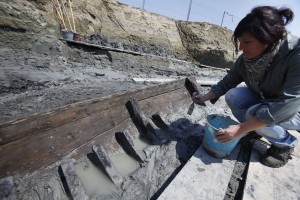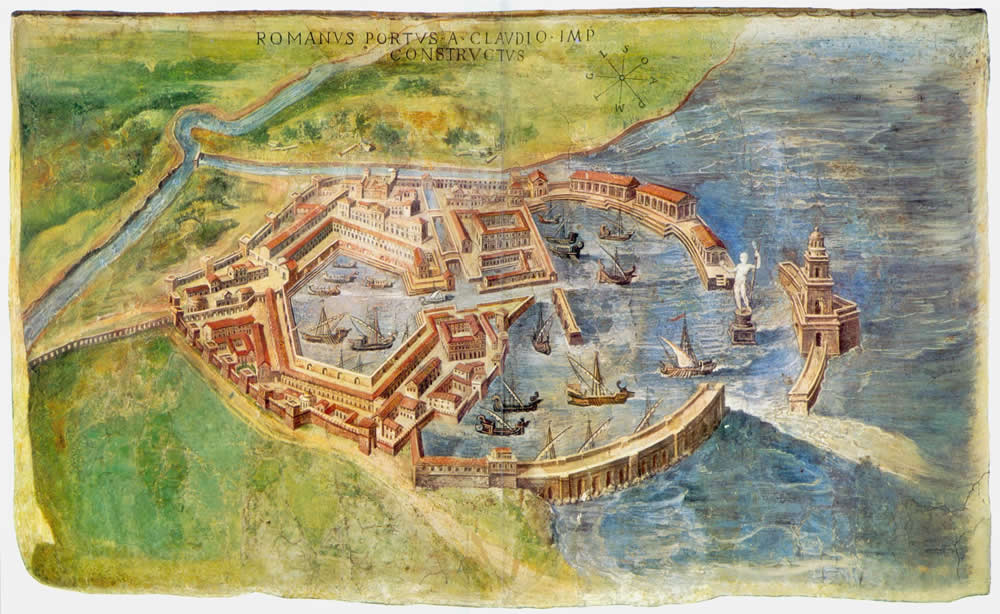 Archaeologists excavating an area where a bridge is scheduled to be built between modern-day Ostia and Fiumicino, the town just outside Rome where Leonardo da Vinci airport is found, have discovered the remains of an ancient Roman ship. The 11-meter (36-foot) section is from one of the sides of the ship. So far neither the stern, bow nor hull have been recovered, but since we’re talking about ancient wood, the team is working very deliberately to ensure its preservation.
Archaeologists excavating an area where a bridge is scheduled to be built between modern-day Ostia and Fiumicino, the town just outside Rome where Leonardo da Vinci airport is found, have discovered the remains of an ancient Roman ship. The 11-meter (36-foot) section is from one of the sides of the ship. So far neither the stern, bow nor hull have been recovered, but since we’re talking about ancient wood, the team is working very deliberately to ensure its preservation.
Anna Maria Moretti, archaeological superintendent for Rome and Ostia Antica, said “the find is a novelty because at that depth, about four metres below the topsoil, we have never found a ship, only layers (of buildings) and one single structure”. […]
She also said there were “remains of ropes and cables” in the ship.
“Restoring the vessel will be an extremely delicate operation,” Moretti went on. “We’re keeping it constantly covered in water so that the wood doesn’t dry out.
“The wreck must be treated with highly sophisticated preservation techniques,” Moretti said.
I hope they have a giant freezer available somewhere, because the polyethylene glycol dousing system that preserved the likes of the Mary Rose and the Vasa is way too expensive with oil prices the way they are.
According to site director Paola Germoni, the discovery of the ship at this location indicates that the ancient coast line was 4 kilometers (2.5 miles) further inland than it is today. Silting gradually filled the port and the mouth of the Tiber shifted, pushing back the shoreline so that the ancient city of Ostia, now called Ostia Antica, is miles away from the modern beach town of Ostia.
You can see how the river and shoreline moved in this post about Portus, the artificial harbour first constructed next to Ostia’s smaller natural harbor by the emperor Claudius.
Roman ships were found before in this same area when the airport was being built. The small fleet and the artifacts found with them are now on display in Fiumicino’s Museum of the Roman Ships.

